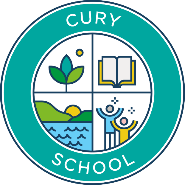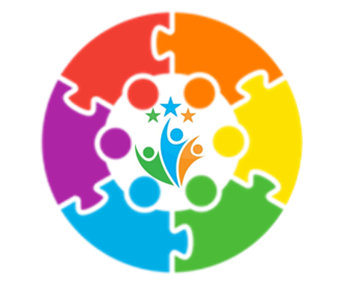Computing
![]()

Our computing curriculum at Cury School aims to empower students with the digital literacy and computing skills they need to thrive in an increasingly digital world. We recognise that technology is everywhere and will continue to play a pivotal part in the pupils’ lives. We therefore want to model and educate our pupils how to use technology positively, responsibly and safely. Our curriculum aims to support emotional and social development through interactive and engaging activities that promote creativity, problem-solving, and collaborative learning. Computing lessons are designed to offer a safe and structured environment where pupils can build confidence, self-regulation skills, and communication abilities. We aim to introduce fundamental concepts of computing in a way that is accessible, engaging, and appropriate for each child's developmental stage. Our overall objective is to create a positive learning experience that fosters curiosity and builds resilience, while integrating key elements like problem-solving, exploration, and communication.
![]()
Computing lessons at Cury are delivered in a manner that considers the unique emotional and learning needs of the students. The learning is adapted to ensure it is accessible for each pupil, with a focus on hands-on, sensory-rich activities that are both engaging and interactive. Skills are taught progressively through Key Stages 1 and 2, beginning with foundational concepts such as basic digital literacy (e.g., using a mouse or touchscreen) and early understanding of technology’s role in the world. As pupils progress, they engage in activities that develop their understanding of algorithms, problem-solving, and communication through simple coding exercises or by using tools such as Bee-Bots, Micro:bit and Scratch Junior.
We understand and embrace that computers and related technologies are frequently used throughout the school day and form part of an invaluable education of all of the children. Therefore, every class has access to appropriate technologies including computers, laptops, clever touch boards and iPads. Computing skills are taught through cross-curricular activities as IT is used in most lessons to engage and motivate pupils and allow them access to a wide range of learning opportunities. iPads are also used for some children to access augmented, alternative communication.
Our curriculum for computing encompasses the National Curriculum strands and aims to ensure that all pupils can access learning and develop their understanding of technology. Our curriculum focuses on the key concepts:
-
Technology awareness
-
Presenting information and multi-media
-
Data
-
Coding
-
Online safety
Lessons are taught practically, and children engage in simple activities including educational games or using interactive whiteboards to foster curiosity and digital skills. Computing is sometimes taught in discreet computing lessons and sometimes as part of other sessions with clear links to the computing targets.
Social-emotional learning is embedded through collaborative tasks that encourage turn-taking, sharing ideas, and problem-solving together. Emotional regulation strategies are used when students feel frustrated or overwhelmed, ensuring that technology use remains a positive experience. The teaching approach is trauma-informed, providing structure and clear expectations to help students feel safe and successful.
![]()
Computing at Cury School encourages pupils to grow confidence and competence with technology, as well as their improved social-emotional skills. By engaging with IT in a supportive environment, children develop not only technical skills but also key emotional skills such as resilience, focus, and cooperation. Early experiences with technology help lay a foundation for future learning, allowing them to build confidence in their ability to engage with the digital world. As pupils progress, they develop motivation and participation in learning activities, showing a greater ability to manage their emotions and behaviour in both individual and group settings. Over time, students become more independent in their digital tasks and develop the skills to communicate their ideas effectively. The integration of SEL into computing lessons ensures that the use of technology supports students' emotional growth, helping them to regulate their emotions, navigate challenges, and engage positively with peers. Overall, our computing curriculum equips students with the skills and knowledge they need to use technology effectively and safely for a range of different purposes.







